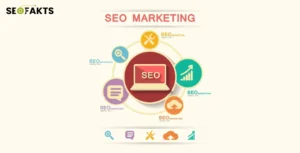In the realm of content writing, storytelling isn’t just a tool; it’s the very essence that can engage and connect with the audience on a profound level. A good story can transform the mundane into the extraordinary, making the invisible visible and turning passive readers into active participants. Here’s how you can master the art of storytelling in your content writing to captivate and inspire your audience.
Related blog How a Responsive Website Can Boost Your Business in a Mobile-First World
Understanding the Power of Storytelling
Why Storytelling Matters: At its core, storytelling is about forging connections. Stories have the power to evoke emotions and create empathy, making them a powerful tool in content writing. By integrating stories into your content, you can transform your writing from simple information dissemination to creating memorable experiences for your readers.
Elements of a Good Story
Diving into the elements of a good story reveals the intricate craftsmanship involved in captivating an audience. Central to this art are relatable characters, engaging conflicts, and satisfying resolutions that together weave the fabric of compelling narratives.
1. Characters: Every story revolves around characters that your audience can relate to. In content writing, you can personify your brand, the customer, or even the problem you’re solving. Characters make your story relatable and keep your readers invested.
2. Conflict: Conflict is the heartbeat of any story. It introduces tension and excitement, compelling the reader to find out what happens next. In content writing, conflict could be the challenges your readers face that your content or product can help overcome.
3. Resolution: Every good story has a resolution that brings closure to the conflict introduced. Your content should guide readers through the conflict and lead them to a satisfying resolution, ideally with your product or service providing the solution.
Related blog Top 10 SEO Strategies to Boost Your Website’s Ranking
Techniques to Enhance Storytelling in Content Writing
In the competitive landscape of content writing, storytelling techniques are essential tools that enhance engagement and retention. Discover how to captivate your audience through compelling narratives that resonate on a personal level.
1. Use the Narrative Arc: A narrative arc has a beginning, middle, and end. Start by setting the scene, introduce the main conflict or challenge, and conclude with a resolution. This structure keeps the content cohesive and ensures a logical flow that readers can follow easily.
2. Show, Don’t Tell: Instead of simply stating facts, show them to your readers through scenarios or anecdotes. This technique allows readers to visualize your message and understand the impact more profoundly.
3. Incorporate Sensory Details: Engage all five senses in your storytelling. Describing how things look, sound, smell, taste, and feel can make your story more vivid and immersive.
4. Leverage the Power of Dialogues: Dialogues can break up the monotony of continuous prose and add a dynamic element to your storytelling. They bring characters to life and can effectively convey your message in a more conversational and engaging way.
5. Emphasize Emotional Appeal: People are driven by emotions rather than facts. By tapping into emotions like happiness, fear, relief, or excitement, you can motivate readers to take action.
Related blog How to Develop a Digital Marketing Strategy That Drives Results
Examples of Storytelling in Different Types of Content
In the diverse landscape of content creation, storytelling manifests uniquely across various platforms and formats. Here’s a glimpse into how storytelling breathes life into different types of content, from blog posts to social media narratives.
Blog Posts: Share customer success stories or a day in the life of someone using your product. This not only illustrates the product’s benefits but also builds a connection through real-life applications.
Social Media: Use platforms like Instagram or Twitter to tell ongoing stories through posts or a series of tweets. This can be about behind-the-scenes actions, a problem-solving journey, or customer experiences.
Emails: Start your emails with a short, personal story to draw readers in before presenting the main message or offer. This can increase the likelihood of the emails being read and acted upon.
Related blog How to Create a Social Media Strategy That Drives Results
Common Pitfalls to Avoid
When integrating storytelling into your content writing, it’s crucial to sidestep common pitfalls that can undermine the effectiveness of your narrative. Avoiding these mistakes ensures that your story not only captivates but also conveys your message clearly and compellingly.
1. Overcomplicating the Story: Keep your stories simple and focused. Overloading a story with too many characters or divergent plots can confuse readers and dilute the message.
2. Losing the Core Message: Ensure your story always aligns with the key message or call to action. A good story that strays too far from the main message might entertain but won’t fulfill its purpose of content marketing.
3. Ignoring the Audience: Know your audience and what types of stories resonate with them. A mismatch between the story and the audience’s interests or values can lead to disengagement.
Related blog Top Graphic Design Trends to Watch in 2024
Conclusion
Storytelling in content writing is an art that requires creativity, precision, and an understanding of human emotions. By incorporating these storytelling tips and techniques, you can enhance the effectiveness of your content, connect with your audience on a deeper level, and drive meaningful engagement. Remember, in the digital world, those who tell the best stories will capture the most hearts and minds.





